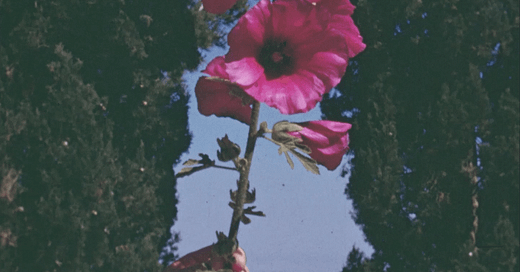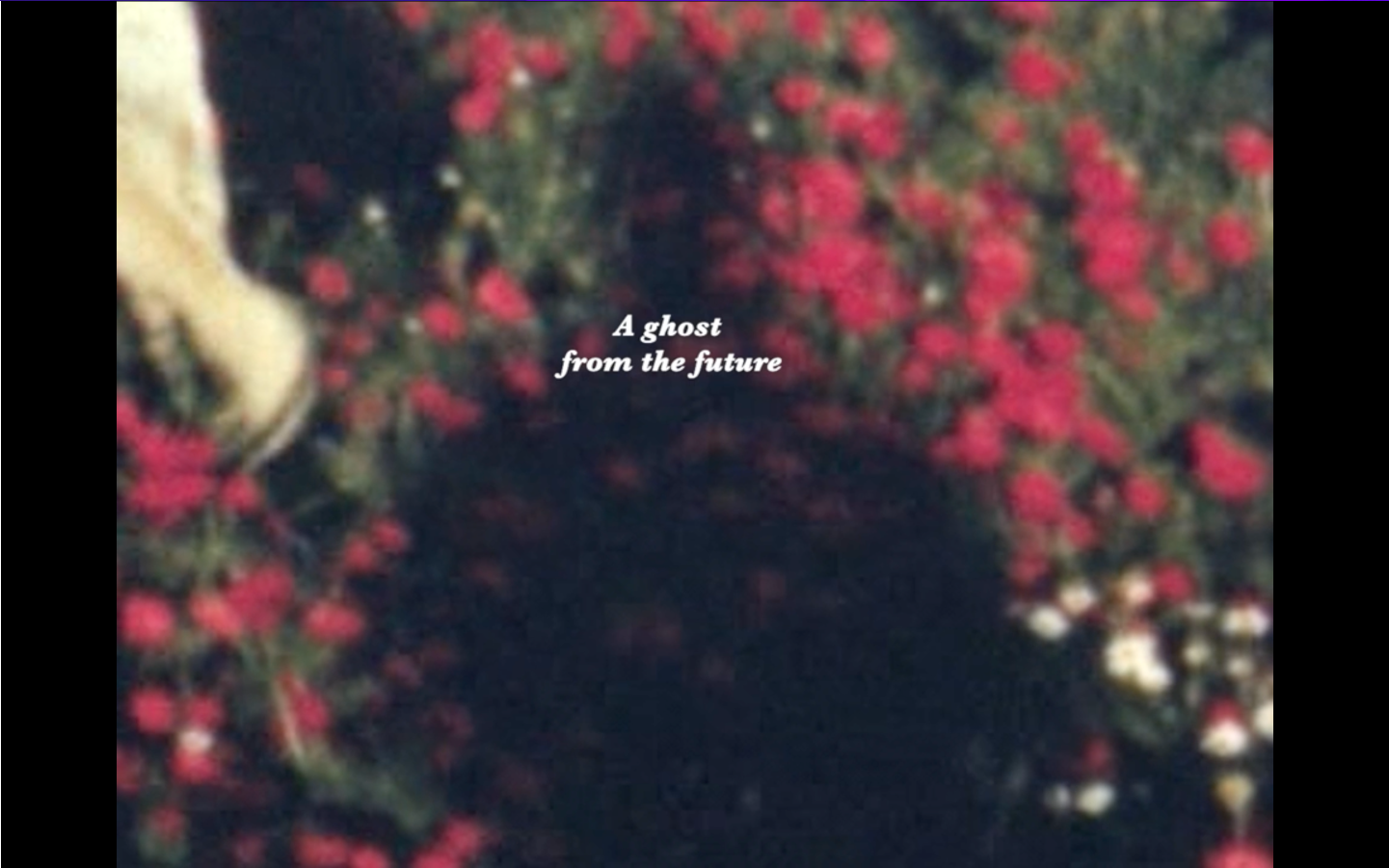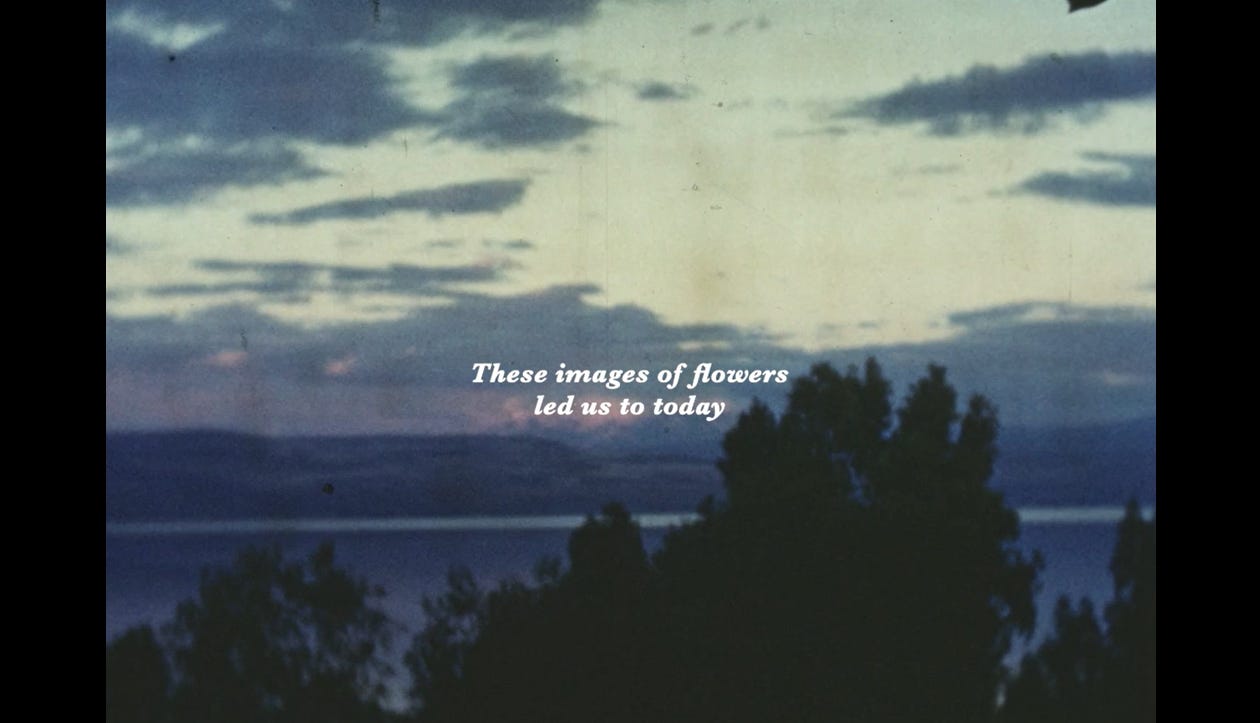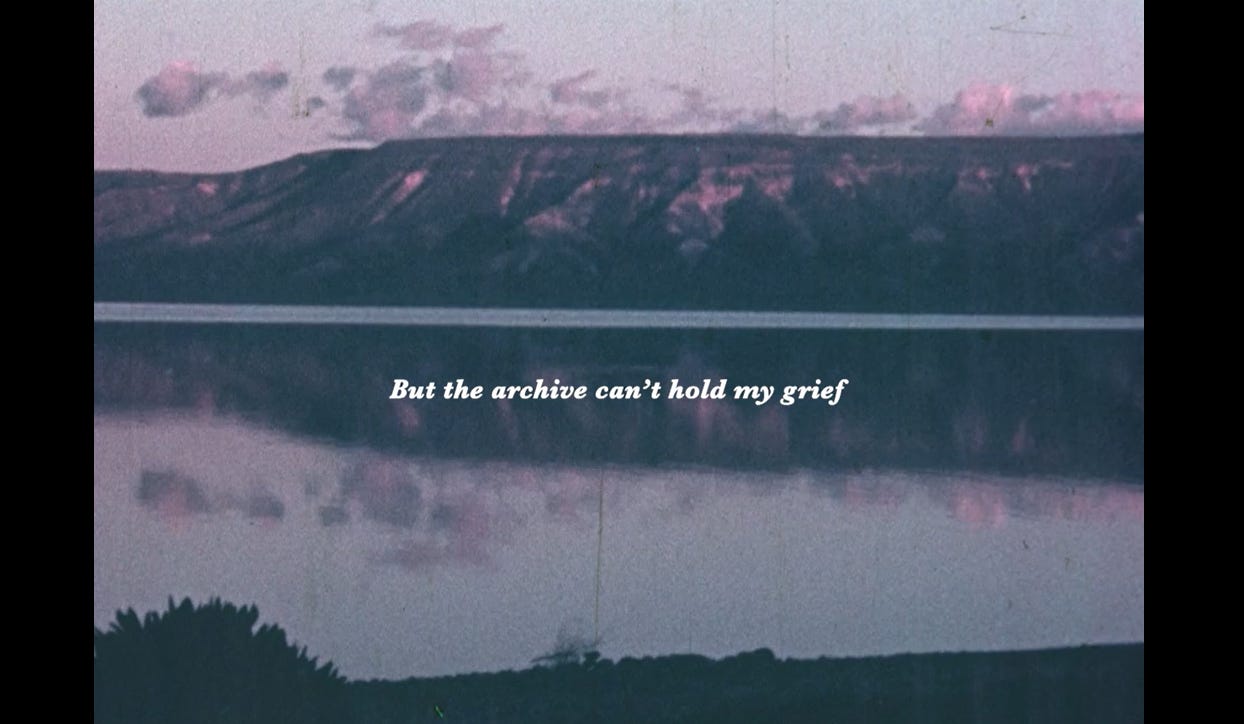“the dirt holds the bodies of the men
of the ghosts, in mass, the earth blooms
their names through wildflowers, multi-colored
& frail. there was no man. only the story
of him. here, the men always disappear. here,
the women marry their imagination
their children: miracles, a ghost story survived”
These stills are from the short film ‘The Flowers Stand Silently, Witnessing’ by Theo Panagopoulos, 2024.
You can watch it online for free until May 10th, along with 11 other films about colonialism & the climate crisis.
I’ve also been looking at other herbariums, including the pressed plants from the 1899 book ‘Wild Flowers from Palestine' by Reverend Harvey B. Greene which is in the public domain, as well as the 1900-1920 photographs from the American Colony of Jerusalem’s ‘Wild Flowers of Palestine’.


As for counter colonial references, I was grateful to get my hands on a copy of ‘Plants of the Quran: History & Culture’ by Shahina Ghazanfar. I’d also recommend checking out the multimedia project ‘Wild Plants of Palestine’ by Alaa Abu Asad. He also has a lecture about ‘Wild Plants of Palestine and Japanese Knotweed: Exploring Territorial Extensions, History and Colonization’.
“It is rare for any of us, by deliberate choice, to sit still and weave ourselves into a place, so that we know the wildflowers and rocks and politicians, so that we recognize faces wherever we turn, so that we feel a bond with everything in sight. The challenge these days, is to be somewhere as opposed to nowhere, actually to belong to some particular place, invest oneself in it, draw strength and courage from it…”
- Scott Russell Sanders in his essay ‘Local Matters’, quoted by Bell Hooks in ‘Belonging: Culture of Place’





















beautiful and full of grief and longing and haunting. thank you <3